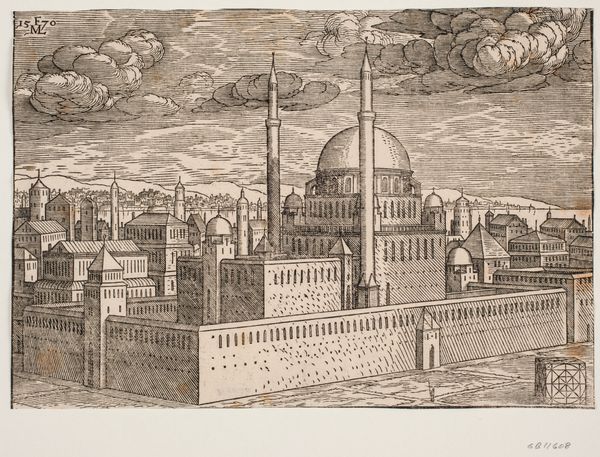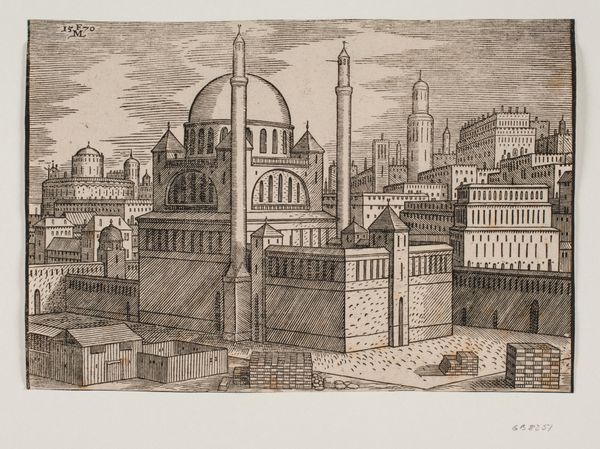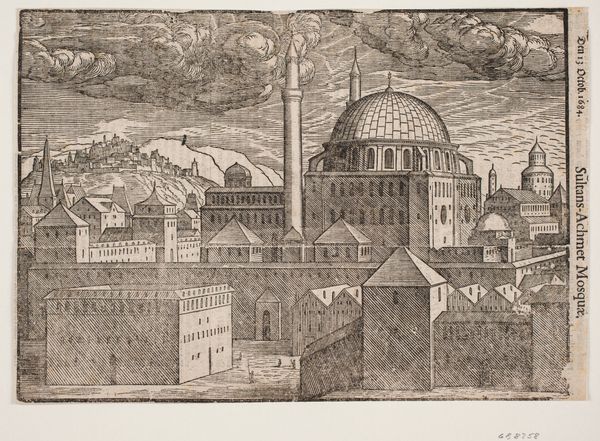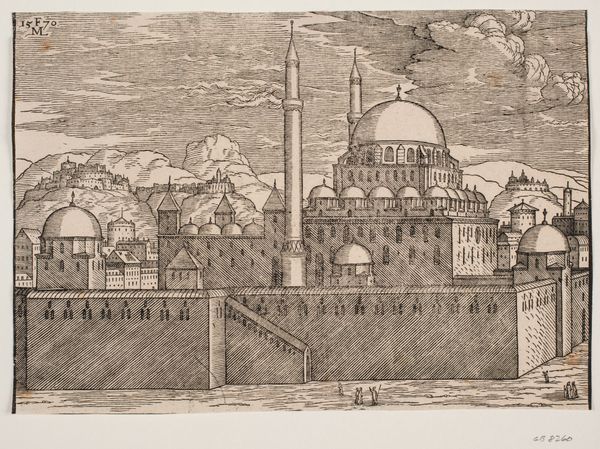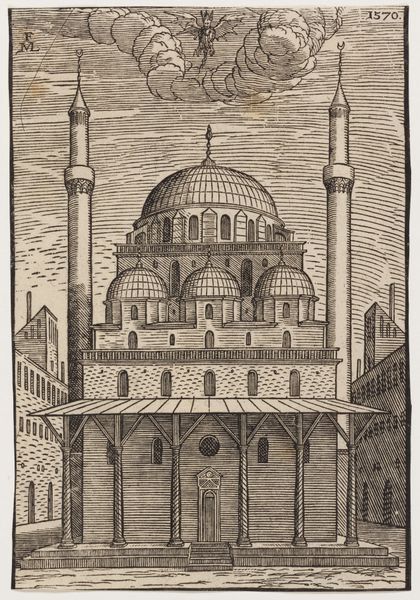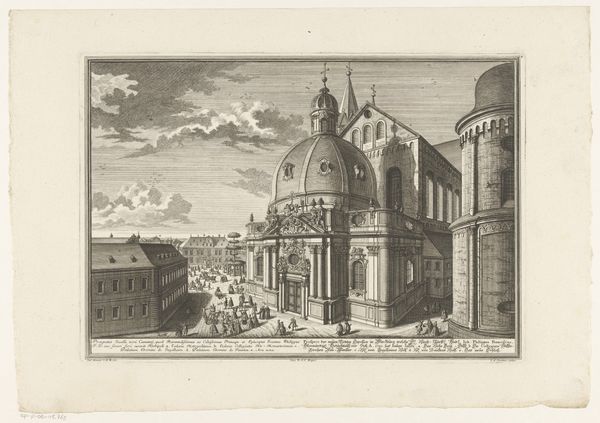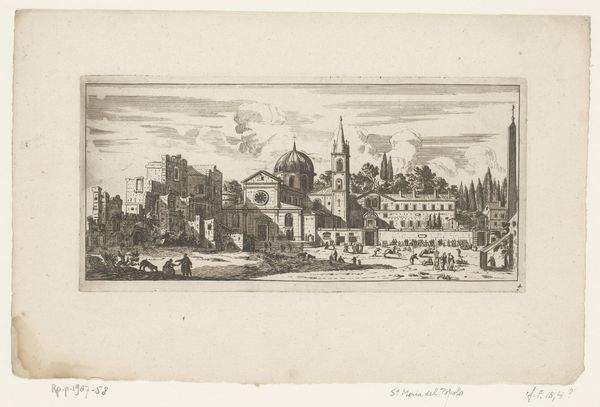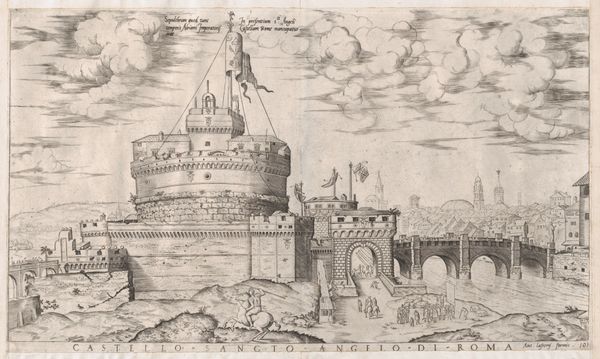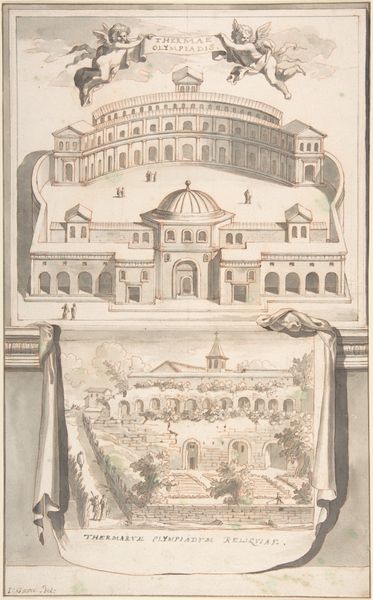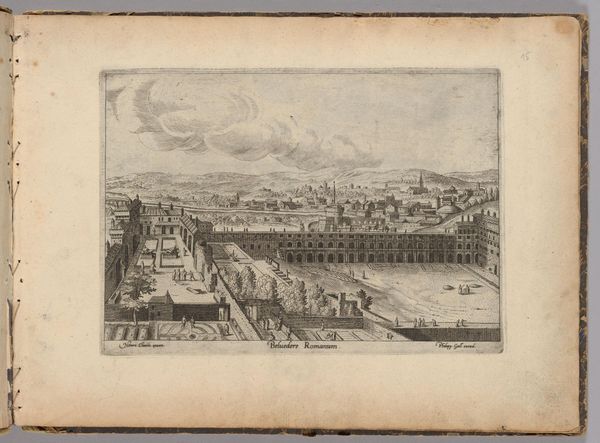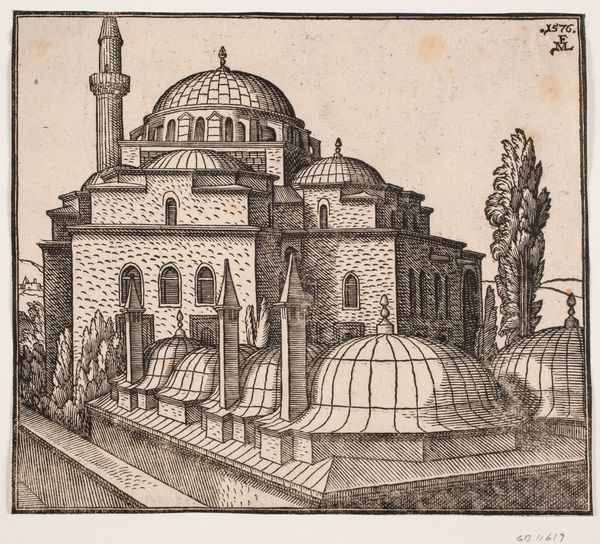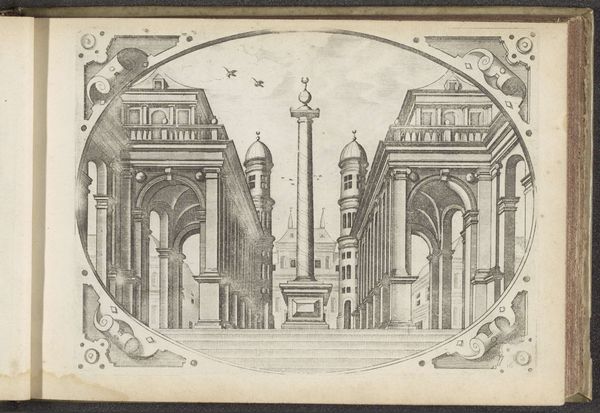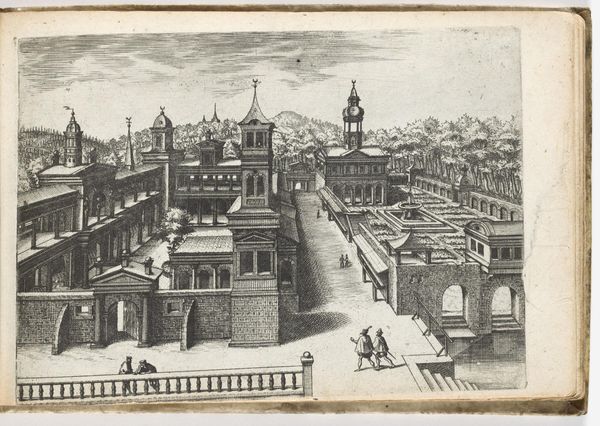
print, etching, woodcut
#
ink drawing
# print
#
etching
#
landscape
#
etching
#
geometric
#
woodcut
#
line
#
cityscape
#
islamic-art
Dimensions: 190 mm (height) x 129 mm (width) (bladmaal)
Curator: The Selim I Mosque, made around 1570. This etching, woodcut and ink drawing, attributed to Melchior Lorck, shows a detailed cityscape. The mosque dominates, but there’s a striking walled structure with a pattern cube in the foreground that adds a curious depth. Editor: The first thing that hits me is the sheer density of the etching! It’s a meticulously rendered cityscape. There's an imposing and somewhat austere mood about it with the very formal structure and geometric shapes. Curator: Right, let’s consider the labor that goes into producing a piece like this. The technique requires the physical tooling of a plate, the repetitive and careful inking, and the physical demands of printmaking. Then we have the labor required for the monumental architecture pictured. There is a constant element of the human touch evident within mechanical production. Editor: And thinking about the image in relation to its time, it presents an interesting dialogue about the cultural and religious landscape. How would it have been viewed by different audiences back then? Lorck had travelled to the Ottoman Empire... what was he intending to communicate? Is it admiration, observation, something more critical? Curator: It presents a complex problem for the question of cultural exchange. Look closely, and you see the etcher using different line weights to give depth to his landscape view. These types of landscape scenes had popular appeal and were easily reproduced, leading to much wider viewership. But who was producing the paper, mixing the ink? Where did the materials come from, what about the transportation? All of these contribute to its understanding and interpretation. Editor: Indeed. There’s also a socio-political context to this; one man's faith can be another man’s conquest. I wonder how people who held power at the time intended for viewers to receive it? Did this reinforce or challenge biases and cultural presumptions? Curator: Examining this print has allowed me to consider labor, materials, and methods used to create the original. Editor: Analyzing it in tandem has broadened our horizons with respect to social issues in historical narratives, highlighting aspects about religious power, artistic labor and cultural understanding during the Renaissance.
Comments
No comments
Be the first to comment and join the conversation on the ultimate creative platform.
